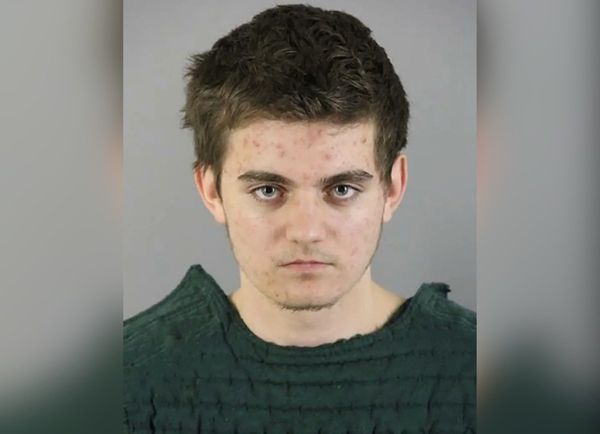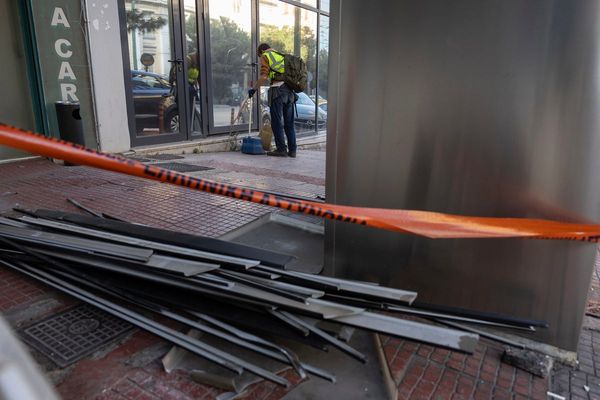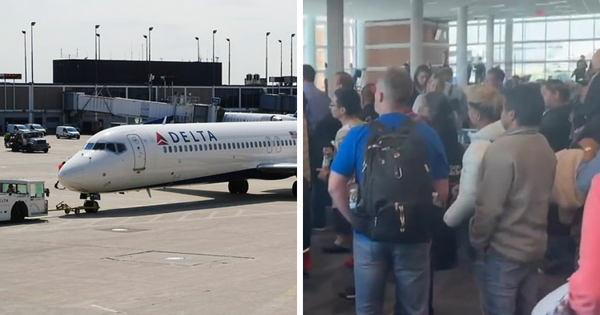
A cousin of Black Lives Matter co-founder Patrisse Cullors died after Los Angeles Police repeatedly tased him in the middle of the street last week, according to police body-camera footage and his family's account.
Keenan Anderson, a 31-year-old high school teacher and father, was trying to get help after a traffic collision when he was chased, held down by multiple officers and tased for over 90 seconds as he begged for help.
Anderson's death, one of three fatalities stemming from the LAPD's use of force already this year, is sparking fresh calls for police reform in a city that's long been calling for racial justice.
"I've been challenging law enforcement for the last 22 years [...], but I've never had someone this close in my family be killed by the police," Cullors told NPR.
"It's a devastating reality that any one of us could be impacted by the crisis that is the U.S. police system," she added. "We have to do something."
Body camera footage shows Anderson pleading for help under police restraint

LAPD released edited body camera footage for all three of the deaths on Wednesday. Police Chief Michel Moore said they'd forgone the usual 45-day window for keeping the video private due to intense public interest.
According to the accompanying police statement, an LAPD officer, whose name has not yet been released, first encountered Anderson at 3:38 p.m. PT on Jan. 3, when Anderson flagged him down for help with a traffic collision.
The officer found Anderson "running in the middle of the street and exhibiting erratic behavior," the account reads.
Cullors, who watched the video with family just hours before its public release, says she recognized a sense of fear on her cousin's face.
"When you get in a car accident, your body is in shock," she said. "I don't know what my cousin was going through, emotionally and mentally. But what I do know is that he got in a car accident. That's scary. And when you get in a car accident, you need help."
Others involved in the collision said Anderson had caused it, Moore said during a news conference Wednesday. Moore also said that Anderson had committed a felony hit-and-run and that another person involved in the collision said Anderson tried to steal a vehicle.
The released footage starts with the responding officer ordering Anderson to get out of the street and up against a wall. Anderson, looking back at the scene of the accident, initially kneels with his hands up, shouting, "I didn't mean to. I'm sorry."
After Anderson complies with later orders to sit, the officer requests additional units to help with a DUI test. The seven minutes the officer waited for backup were not released as part of the footage.
Footage after the seven minutes shows Anderson standing up again, saying that he needs to get some water, then that he wanted to make sure people could see him.
"You're putting a thing on me," he says, backing away from the officer as the officer tells him to sit back down.
Anderson proceeds to run into the street and crosses a busy intersection as the officer pursues him on his motorcycle. Two more officers arrive on the scene, blocking some of the surrounding traffic.
The officers tell Anderson to get onto his stomach. When he doesn't fully comply, the officers push him onto the ground and attempt to use their body weight to restrain him. One officer appears to put his elbow across Anderson's neck.
"Please, please, please, please, please" Anderson yells, adding, at one point, "They're trying to George Floyd me."
Footage shows officers threatening to tase Anderson at least 12 times before the officer finally fires the taser. The officer then activates the taser on Anderson at least six consecutive times, at one point holding it against his back while the weapon buzzes for roughly 30 seconds straight.
LAPD says it's "unclear" what role the taser played in Anderson's death

At Wednesday's news conference, Moore said only a "single taser activation" had occurred, elaborating later that he believed several attempts were ineffective and the officer used "a series of dry stuns" following the first full activation.
Moore also said the department has no preset limit on the number of times a taser should be used in a situation.
Following the tasing, footage shows the officers placing Anderson in handcuffs and ankle hobbles. At least eight officers appeared to be on the scene by the time Anderson was restrained.
Paramedics arrived at Anderson's side within a minute of being called and, five minutes later, transported Anderson to a local hospital, the LAPD says. He died four hours later after appearing to suffer cardiac arrest. A formal cause of death has not been determined.
Justice advocates criticized the LAPD for releasing a preliminary toxicology report, which showed Anderson's blood samples tested positive for cocaine and cannabis.
Melina Abdullah, a friend of Patrisse Cullors and co-founder of Black Lives Matter Los Angeles, described the focus on narcotics as an "assassination on Keenan's character after they've already stolen his body."
"Keenan was the one who flagged police down in the first place," she told NPR. "And then he was treated as the criminal, as most Black men are."
Cullors and Abdullah both said concerns about Anderson's mental state should've been handled by trained mental health professionals, not an armed traffic cop.
The LAPD's Force Investigation Division is still investigating the incident. Once the investigation is complete, Moore will make a recommendation to the civilian Board of Police Commissioners, which, in turn, will decide whether the use of force and police tactics were appropriate for the circumstances.
Anderson was a passionate educator with a big smile, Cullors says
Anderson, a Washington, D.C., resident, was visiting LA to see family for the holidays, Cullors told NPR.
"Our family is a really supportive and loving family. We were always so proud of each other," Cullors said. "When you grow up in a big family, your cousins are your first best friends."
She describes Anderson as a loving father and fiancé, a man who had a big smile and clear dreams for his future.
Anderson considered becoming a police officer when he was younger, but he realized his impact would be greater in his ultimate career choice: teaching 10th grade English at a charter school in Washington, D.C.
In a statement to students and their families, Digital Pioneers Academy said Anderson was the third member of the school community to fall victim to violence in the past 65 days. Two high school students died in separate incidents of gun violence last fall.
Mashea Ashton, the school's founder, wrote that the grieving community is also angry: "Angry that, once again, a known, loved, and respected member of our community is no longer with us. Angry that another talented, beautiful black soul is gone too soon."
Cullors said she wants to see LA reorganize its relationship with its police department, starting by reducing the LAPD's size.
"I think what's most important for people to organize around right now is 'no cops at traffic stops,'" she said. "My cousin would be around right now if he hadn't had a police encounter. Professionals who know how to deal with a crisis should've been at that scene."
In recent years, tasers have come under question as an unsafe policing tool
Cullors also says the department needs to have a conversation around its lack of a clear policy on tasers.
Though the weapons are often portrayed as a safer policing tool than handguns, a 2017 Reuters investigation found more than 1,000 people in the U.S. died after being tased or shocked with a stun gun.
There have also been shootings by police in which officers claim they were reaching for a taser when they actually pulled a handgun, like the high-profile killing of Duante Wright in Minnesota.
Analysts question why an officer would reach for a taser when suspects are fleeing in the first place: The weapons inflict neuromuscular incapacitation, which isn't an incentive for de-escalating a situation.
Moore said the LAPD had reduced the use of tasers by 20% over the last five years. The tool is only effective about half the time in actually helping officers restrain suspects, but that's a better percentage than other weapons, he added.
In the same week they tased Anderson, LA officers fired handguns at 45-year-old Takar Smith and 35-year-old Oscar Sanchez, bringing the LAPD's fatal encounter total up to three in the first week of the new year.
LA Mayor Karen Bass said in a statement that she had "grave concerns" about the footage of the three fatal police incidents and called for the officers to be placed on immediate leave.
"I will ensure that the City's investigations will drive only toward truth and accountability," Bass wrote.
"No matter what these investigations determine, however, the need for urgent change is clear. We must reduce the use of force overall, and I have absolutely no tolerance for excessive force."







